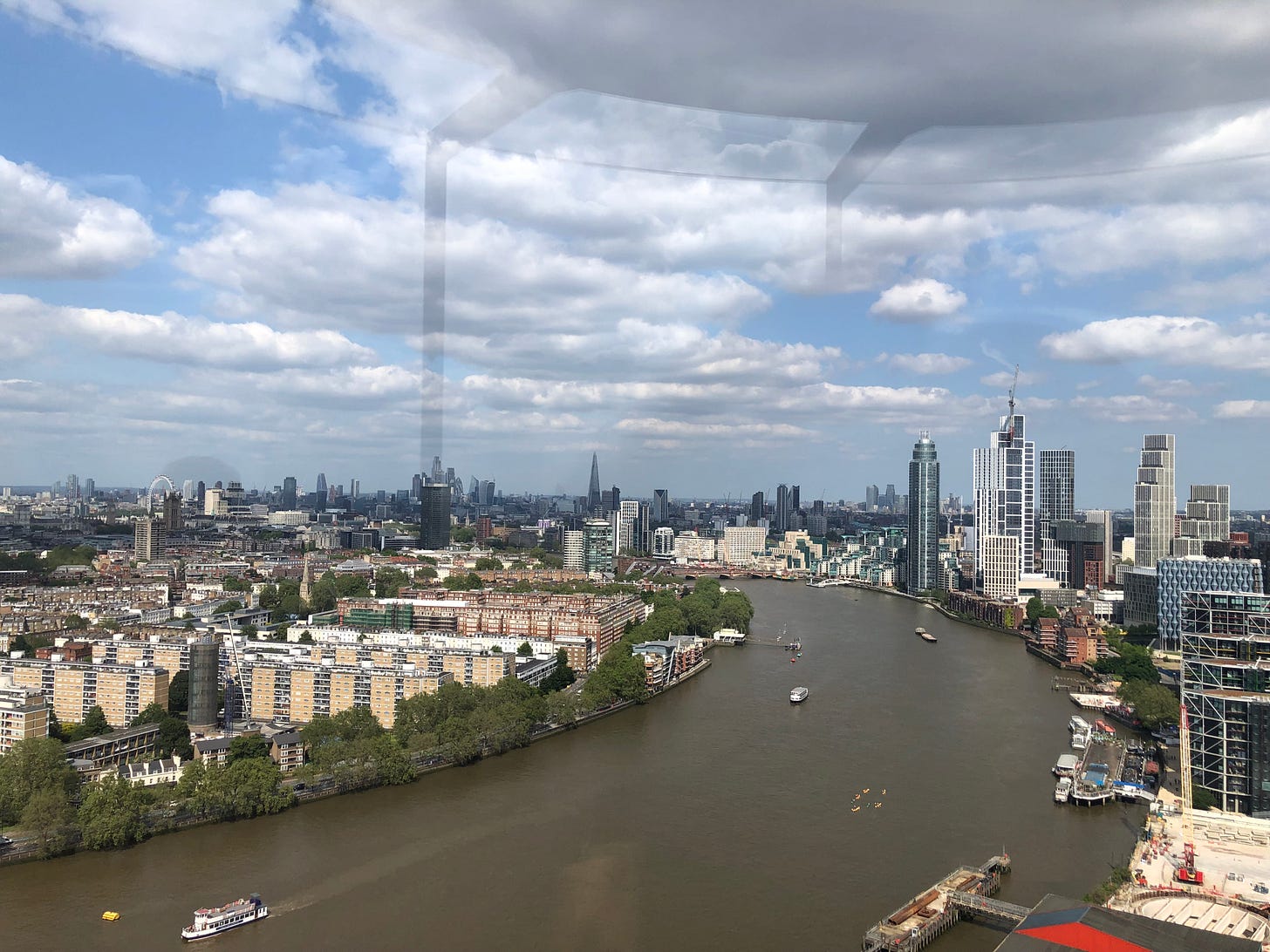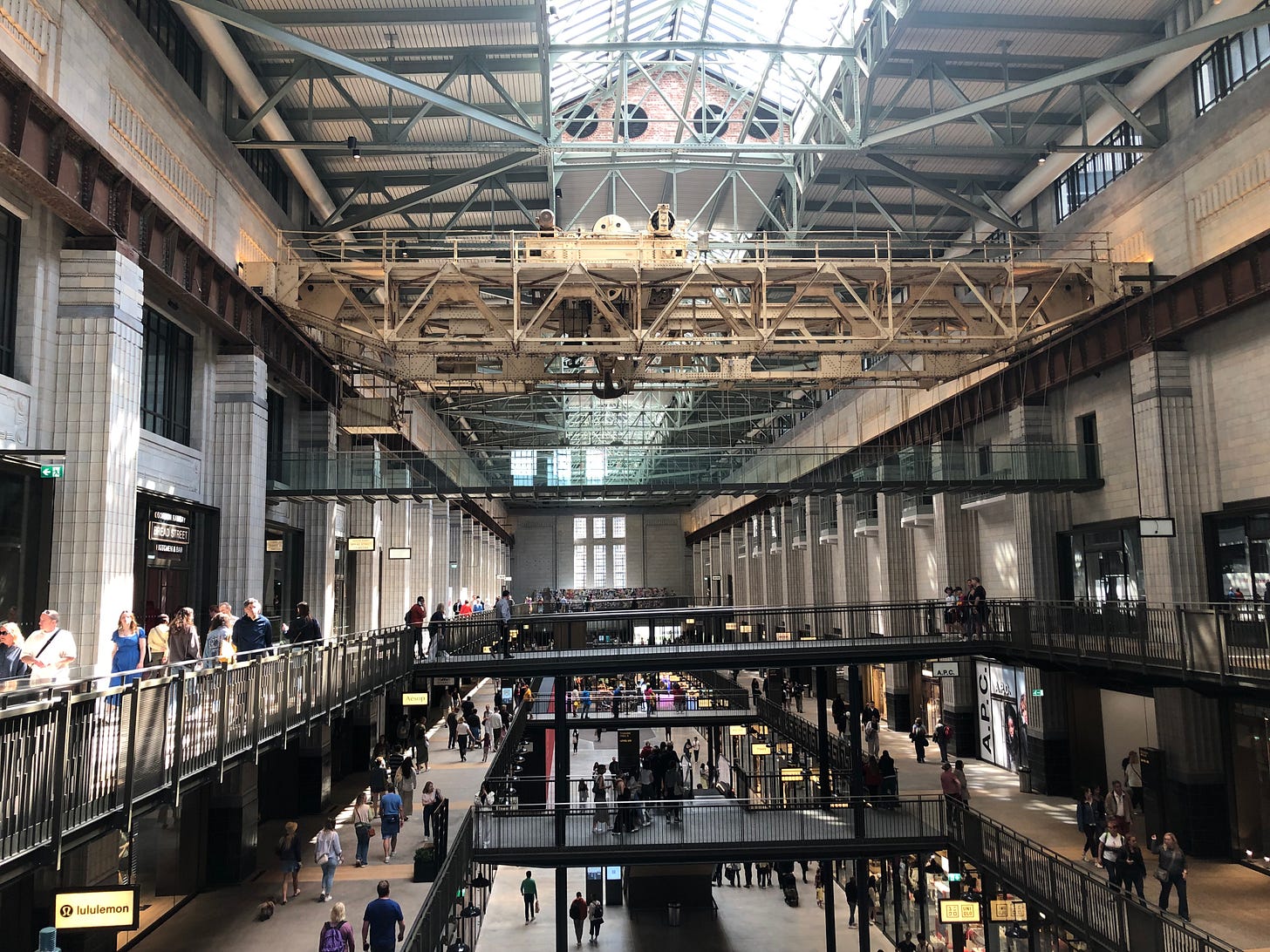Battersea Power Station and Nine Elms: Pros, cons and what might (or might not) have been
There are things to admire and to revile in London's most disapproved of major regeneration scheme, which might be about as good as we were likely to get
For several years and counting the Nine Elms and Battersea Power Station part of London, lying south of Vauxhall Bridge beside the Thames, has provided prime ingredients for modern day accounts of how and why London has gone wrong.
A recent example occurred in 2021, when a media herd converged on the most conspicuous symbol of “luxury” development on land that had previously been for prosaic industrial use.
The 25-metre, see-through Sky Pool is an attention-grabbing feature, suspended as it is between two blocks of flats whose two-bedroom apartments go for £1.2 million a piece. It had been lined up for disapproved since 2015, when the first projections of it were released. Now it could be vilified for being exclusive as well as ostentatious.
Denunciations of mixed-tenure residential projects with deluxe facilities available only to their wealthiest inhabitants - and therefore off bounds to those in the hived-off “affordable” dwellings tucked out of sight near the back door - were already a standard strand of a Grand Narrative about the capital being ruined by “the rich”. The Sky Pool sent the outrage chorus soaring.
Last autumn came another opportunity to condemn. Four decades after it stopped generating electricity for good, the Battersea Power Station building - an edifice to which that flogged-to-death adjective “iconic” truly applies - reopened as a shopping mall. “Every square inch monetised,” was one guilty verdict handed down.
So much for the flock opprobrium. Let’s flirt a little with apostasy.
I visited the area the other day, my first time since last spring. I found that I’m still a fan of the silvery new US Embassy building, designed by Kieran Timberlake. I still like the look of the adjacent Embassy Gardens blocks, which the Sky Pool links like a bridge. And, clutch your pearls, I get a kick out of the Sky Pool itself. It sparkled in the sunshine. I admired its nerve. And, come on, it’s pretty much a sales gimmick after all.
The main reason for my trip was a belated first foray inside the refurbed Grade II* listed Giles Gilbert Scott monument. If you dislike shopping malls, you aren’t going to like it there, for all its skilful heritage homage. But I enjoy such cathedrals of consumption, at least until their vibe sends me sleep.
The glass lift that relays groups up one of the building’s four rebuilt chimneys was, at £23.60 on the day, over-priced, but a good vantage point from which to top-up my London panorama photo library. And viewed from the grass blanket spread before it, packed with sun-seekers slurping Aperol Spritz, the exterior looked superb.
It’s not all Dubai-on-Thames super-rich: the World Heartbeat Music Academy, a Wandsworth charity, has a £1 per annum, 50-year lease from the Embassy Gardens developers; a door-knock survey conducted five years ago found that most the households living in various blocks around the place were “UK citizens who are employed full time, with earnings broadly in line with the average for London”. Some of the disdain is nostalgic and snobbish. And since when was shopping mall not “monetised”?
Still, I chanced on plenty to dislike. I curled my lip at an absurd sub-Batmobile Porsche idling arrogantly on the otherwise tranquil gardens concourse. In a marketing suite I overheard it being explained to a party of potential portfolio-enlargers that most of the flats are second, third or fourth homes, and that a 17-year-old with a trust fund had recently bought three of them. Join me, reader, in wanting to ask that unknown youngster, “Why not do something useful with your life?”
The case against Battersea/Nine Elms as a whole has been most knowledgeably made by architecture writer and design professor Deyan Sudjic. Writing in Prospect 18 months ago, he detailed the permissive proliferation of its skyscrapers and the progressive shrinkage of its always-small percentage of sub-market priced homes, with much of the cash secured as a condition of planning consent being granted spent instead on two new stations for the Northern line, among other things.
Sudjic’s hall of blame leads you back to the start of the century and beyond, with star villains including John Prescott, Deputy Prime Minister to Tony Blair, who had the final word on big planning decisions, and London’s first two Mayors, Ken Livingstone and Boris Johnson. He also picks out timeline moments that meant the financing got steeper, such as one of the string of failed Battersea site owners taking the roof off the power station then leaving it to rot when he went bust.
“It did not have to be this way,” Sudjic wrote, citing how Pimlico across the water was built out two centuries ago. Perhaps, as he and others hope, that approach will be revived. My much smaller what-might-have-been thought is born of having read Peter Watts’s excellent Up In Smoke, published in 2016, and going on an organised trip round the site in 2014, guided by local planning officers.
By that sort of time, with London booming, land prices soaring and a massive restoration task ahead, Battersea/Nine Elms was always going to be tall and it was never going to be cheap. Had the swanky towers been shorter and their fittings less deluxe, there would have been even less “developer contribution” to go round. And the alternative might have been more decades of delay and decay. Would that have been better than what we’ve got?
Me on Twitter.
My books.









Here is one of many pieces you can find explaining the concept of real estate “filtering”.
Expensive apartment developments benefit everyone for the (obvious when you think about it) reasons discussed.
Non UK focus but applies here too.
https://www.fullstackeconomics.com/p/how-luxury-apartment-buildings-help-low-income-renters